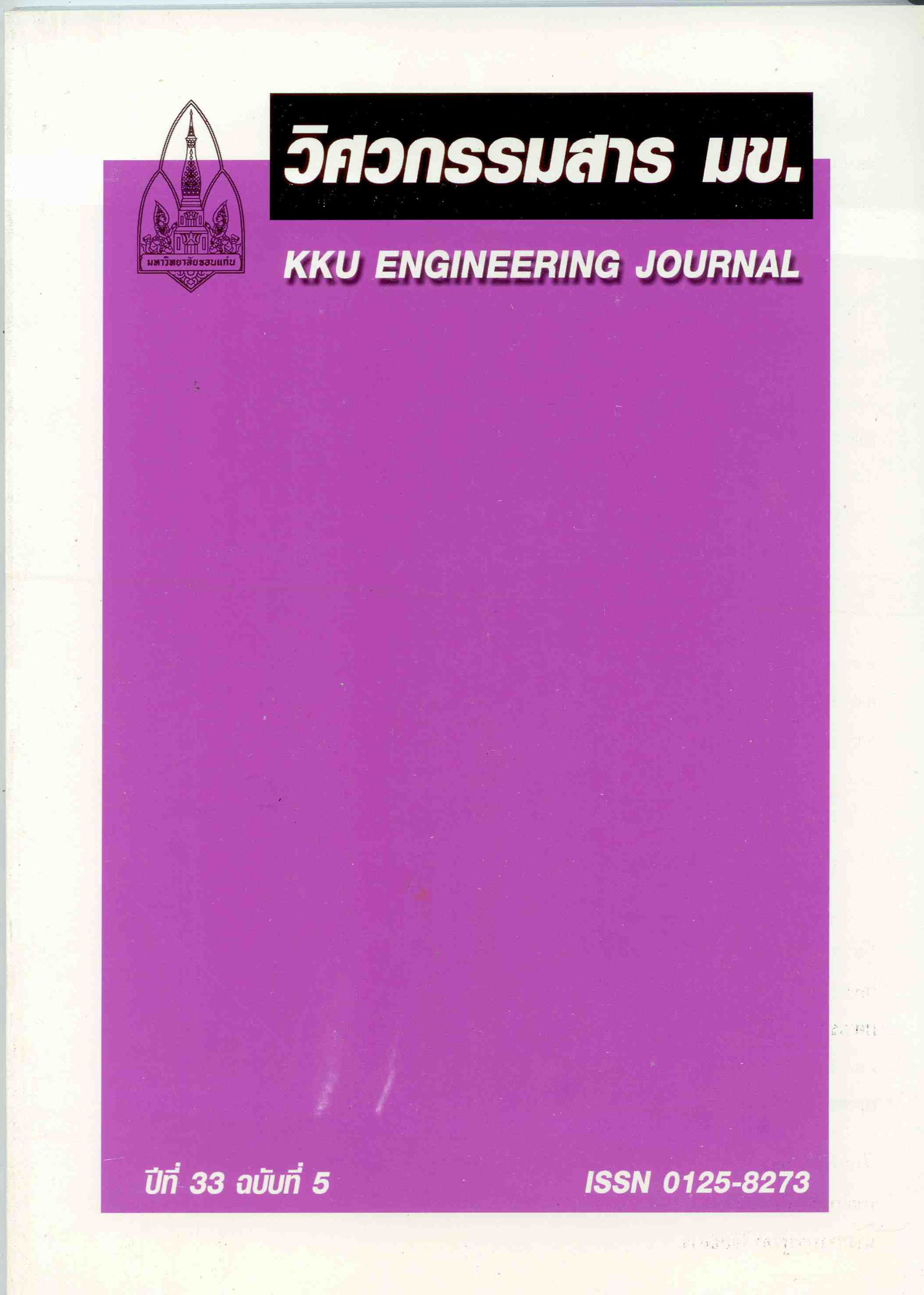Mathematical model and Optimum sizing for a Solar Banana dryer Combined with Parabolic Trough and Phase Change Energy Storage System in Thailand
Main Article Content
Abstract
This research was a technical and feasibility study of a banana dryer combined with a
parabolic trough and a phase change energy storage system. In order to find the performance of
the system we had to use 2 kg of bananas for drying and water as a working fluid to transfer
thermal energy from the parabolic trough to a heat exchanger (water-air) of the dryer. The
remaining energy then was stored in the phase change energy storage which used paraffin as a
working medium.
It was discovered that the efficiency of the parabolic trough was higher when increasing
mass flow rate of water through this parabolic trough. Slightly higher overall heat transfer
coefficient (UAF) was found when increasing air mass flow rate in the drying box. Whereas the
overall heat transfer coefficients (UA) of the phase change energy storage system were 0.37
kW/oC during a charging period and 0.35 kW/oC during a discharging period. The comparison
between the mathematical simulation and the experiment had an error of less than 5 %.
The optimal size of such the dryer was investigated under the condition of Thailand: the
temperature of a drying banana would be in the range of 55-60 oC. In daytime solar energy had to
melt all paraffin in the thermal storage tank. At nighttime the drying box had to use up all the
thermal energy in the thermal storage tank so that it could collect more energy during daytime.
The optimal solution then should be: 100 kg of a paraffin for the thermal storage tank, 2× 2.31
m2 receiving area of the two parabolic solar collectors, 4 m2 area of the heat exchanger tubes in
the paraffin tank, 0.13 kg/s mass flow rate of air in the drying box. The optimum drying system
could bake banana from 105 kg wet product to 45 kg dried product with the final moisture
content of 50 % db. within 2 day (48 hours). Economical analysis showed that the payback period
of this system was 1.33 years. Internal rate of return was about 44.45 %.
parabolic trough and a phase change energy storage system. In order to find the performance of
the system we had to use 2 kg of bananas for drying and water as a working fluid to transfer
thermal energy from the parabolic trough to a heat exchanger (water-air) of the dryer. The
remaining energy then was stored in the phase change energy storage which used paraffin as a
working medium.
It was discovered that the efficiency of the parabolic trough was higher when increasing
mass flow rate of water through this parabolic trough. Slightly higher overall heat transfer
coefficient (UAF) was found when increasing air mass flow rate in the drying box. Whereas the
overall heat transfer coefficients (UA) of the phase change energy storage system were 0.37
kW/oC during a charging period and 0.35 kW/oC during a discharging period. The comparison
between the mathematical simulation and the experiment had an error of less than 5 %.
The optimal size of such the dryer was investigated under the condition of Thailand: the
temperature of a drying banana would be in the range of 55-60 oC. In daytime solar energy had to
melt all paraffin in the thermal storage tank. At nighttime the drying box had to use up all the
thermal energy in the thermal storage tank so that it could collect more energy during daytime.
The optimal solution then should be: 100 kg of a paraffin for the thermal storage tank, 2× 2.31
m2 receiving area of the two parabolic solar collectors, 4 m2 area of the heat exchanger tubes in
the paraffin tank, 0.13 kg/s mass flow rate of air in the drying box. The optimum drying system
could bake banana from 105 kg wet product to 45 kg dried product with the final moisture
content of 50 % db. within 2 day (48 hours). Economical analysis showed that the payback period
of this system was 1.33 years. Internal rate of return was about 44.45 %.
Article Details
How to Cite
Roonprasang, N., Namprakai, P., & Pratinthong, N. (2013). Mathematical model and Optimum sizing for a Solar Banana dryer Combined with Parabolic Trough and Phase Change Energy Storage System in Thailand. Engineering and Applied Science Research, 33(5), 495–510. retrieved from https://ph01.tci-thaijo.org/index.php/easr/article/view/6013
Issue
Section
ORIGINAL RESEARCH
This work is licensed under a Creative Commons Attribution-NonCommercial-NoDerivatives 4.0 International License.



